The Reluctant Coroner by Paul Austin Ardoin (best ebook reader ubuntu txt) 📕
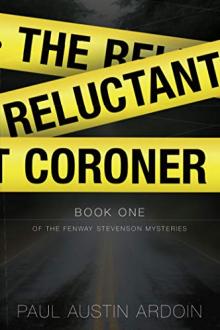
- Author: Paul Austin Ardoin
- Performer: -
Book online «The Reluctant Coroner by Paul Austin Ardoin (best ebook reader ubuntu txt) 📕». Author Paul Austin Ardoin
“Good morning, ma’am,” said Officer Donald Huke.
“I really didn’t like that he kept calling me ‘ma’am.’” she continued, a little louder. “I’m twenty-eight. He made me think I needed an AARP card.”
“Maybe he didn’t like that you didn’t learn his name,” Migs offered.
“Huke is kind of a funny name, don’t you think?”
“I’m right here,” said Officer Donald Huke.
“Nice to talk to you again, Officer Huke,” Fenway deadpanned.
“Same here, ma’am—I mean Miss Stevenson.”
“God, Miss Stevenson is worse. I sound like a high school math teacher with thick glasses and a severe bun. Like one of those buns that’s pulled so tight it looks like you got a face lift.”
Migs coughed. “Hey, hang on, Fenway.”
A moment passed. Fenway heard rustling. Then Migs spoke again.
“Sorry about that.” He cleared his throat and took a deep breath. “Seriously, Fenway, he’s upset that you didn’t bother to learn his name.”
“What? Really? He was just—”
“For someone who gets angry every time she’s called Fenway Ferris, I thought you’d understand.”
Fenway scoffed. “This is totally different.”
“Yeah? Well, this is the kind of shit that Walker used to pull with us. Making us feel like we didn’t matter. He didn’t have our back. Honestly, I’m rooting for his killer to get away. I thought you were different.”
Oof. That was a punch to the gut.
“Fire me if you want, Fenway, but I’m not going to spend another six months getting treated like something you’re scraping off the bottom of your shoe.”
“I—I wasn’t—”
“It wasn’t me this time. Take the time to learn your co-workers’ names. Especially when they’re helping you.”
Fenway was quiet for a moment.
“Sorry, Migs.”
“Don’t apologize to me. Apologize to Donald. Or even better, just learn his damn name.”
Migs clicked off.
Wow. She didn’t think Migs had that in him.
The worst part was that he was right.
A few minutes later, the GPS dinged, and the voice instructed her to exit the highway. She found a parking spot on the street three blocks away from the M.E.’s office. She hurried—as much as she could in those damn strappy heels—and then waited in the outer office on the same brown plastic chairs she had been in the day before.
There was a beep at the desk after about fifteen minutes, and the woman at reception looked up. “Miss Stevenson. Dr. Yasuda is ready to see you. Follow me, please.”
The woman led her down the stairs to the basement, and she used a keycard to open the door for Fenway. Dr. Yasuda was there with Dylan Richards’ body. His body was cut open at the throat, and Dr. Yasuda had gloves on, and was examining inside the throat.
“Hello again,” Dr. Yasuda kept working on Dylan, but her tone was civil enough, if grim. “Sheriff McVie tells me this is the prime suspect in the killing of Harrison Walker.”
“Right.”
“I got a little bit more background on you from our call this morning. I must apologize for yesterday; I thought you were an experienced coroner, and you were missing things, or not paying attention. I didn’t realize you were forced into this job when Mr. Walker was killed.”
“Forced is kind of a strong word for it, but yeah, I’m babysitting this position until the November election.” Fenway shrugged. “No one wanted to quit their day job just to work a handful of weeks.”
“Have you ever performed an autopsy?”
“I’ve done practical work on cadavers in both my nursing and forensics programs. But I haven’t done a real autopsy, no.”
“It’s too bad that I was well on my way with Mr. Richards before you got here. I miss teaching sometimes. But there are some things I can point out to you.” She put some spacers in the wound to keep it open, then removed her hands and looked at Fenway. “First of all, Mr. Richards had been dead for between three and five hours by the time he was found.”
“So, time of death between one a.m. and three a.m.,” Fenway said.
“Yes. I don’t like having such a wide range in time, but the temperature fluctuates in that jail quite a bit overnight. We should be able to narrow it down once we get some test results back.” Dr. Yasuda pulled off her gloves, threw them away, and made a note on her laptop. She picked up a Hagedorn needle, came back to Richards’ body, and pointed out the hyoid bone in the middle of his neck, under his chin. “This bone often breaks or gets crushed in hangings, especially with a short drop like Mr. Richards had from the top bunk in the jail cell.”
Fenway nodded.
“But look at the way his bone was crushed,” Dr. Yasuda continued. She walked over and clicked a button on her laptop and three photos of the hyoid bone, all from different angles, appeared on a projected image on the white wall behind her. “What do you notice about it?”
Fenway went over to the wall and studied the bone photographs. “The angle is wrong for hanging. It looks like there was direct pressure applied from the front, almost perpendicular to the neck.”
“Yes, that’s right. The bone was crushed from the front, with direct pressure.”
“Did someone strangle Dylan with their hands?”
“Let’s see.” She walked over and pointed to a section of the crushed hyoid with the needle. “Does this seem like it could have been done with fingers or thumbs?”
Fenway looked at the photo, and studied it from all three angles.
“No,” she finally answered the doctor. “It’s too thin, and the crushing is consistent across the bone in a line. I think it looks like it was rope.”
“Right again. As a matter of fact, indications are pretty good that the rope used to hang Mr. Richards was the murder weapon.”
“Where do you think Dylan was when he was killed?”
“The physical evidence indicates Mr. Richards was lying supine when he was attacked and killed. The blood started to pool in the back of the head for about three to five minutes before his body was placed in an upright position and hanged.” Dr. Yasuda mimed the physical movements. Fenway inwardly winced as the doctor continued. “The rope fibers match the marks on the skin, though there was some care given to make sure the hanging was done so the marks from the hanging would be in a similar location on the neck as the marks from the strangulation.” The M.E. pointed to red marks on either side of the neck. “And although it’s subtle, the angle of the hanging created a second set of rope marks close to the first, postmortem this time.”
Fenway nodded. She could see exactly what Dr. Yasuda was talking about. “Whoever the killer is, they must be pretty strong to lift a grown man’s dead body into a makeshift noose and short-drop him. I mean, Dylan wasn’t tall—five-six or so, right?—but still, that’s a good one hundred and fifty pounds to lift up as dead weight then drop.”
“That’s an astute observation, Miss Stevenson. I was hoping we’d get some clues with the type of rope used as the murder weapon. But we ran tests, and it’s fairly standard issue, available at most home improvement stores. We ran recent orders through the system, and this particular brand of rope is also kept at many local law enforcement offices, Parks and Recreation, CHP, and, unfortunately, the Dominguez County Sheriff’s Office.”
“Unfortunately,” Fenway repeated.
Dr. Yasuda nodded. “Since the death of Mr. Richards is now going to be ruled a homicide, and not a suicide, I believe Sheriff McVie will be one of the suspects. He found the body, and he was one of the only people who had access to the murder location, the victim, and the murder weapon.”
Fenway felt her mouth go dry. “Do you think Sheriff McVie would have been able to lift the body and simulate the hanging?”
Dr. Yasuda didn’t hesitate before answering. “It’s likely. He’s certainly strong enough to lift a hundred and fifty pounds.”
Fenway thought about how McVie’s strong arms had lifted her up off the sofa when they moved from the living room into the bedroom. McVie was certainly strong enough, Fenway thought: she outweighed Dylan Richards; she was certainly taller by four or five inches, and McVie had picked her up easily as he was kissing her, before he had gently, but forcefully, laid her on her back on the bed. She snapped back to what Dr. Yasuda was saying.
“At a dead weight, and given the necessary maneuvering he would have had to do to get Mr. Richards in the noose… I’ve seen people do a lot more physically demanding activities with significantly fewer physical gifts than the sheriff. Adrenaline and self-preservation are powerful stimulants.”
“With that said,” Fenway murmured, “yes, the sheriff could have done it.” She paused. “But anyone could have gotten that rope, right? It’s not like those supplies are under lock and key.”
“Here they are. And there aren’t a lot of people who have a key. You’ll have to check if it’s the same in Dominguez County.”
“But anyone can go to a Home Depot.”
Dr. Yasuda nodded. “You should tell the sheriff’s lawyer that. Okay, now let’s see how Trevor is coming along with the gun. Which is, this time, the correct caliber weapon.”
They walked out through the double doors, up the stairs, and around the corner to the ballistics lab. Trevor was there, again, with the microscope and some safety goggles, holding a bullet with a pair of forceps.
“What do you have for us, Trevor?” Dr. Yasuda

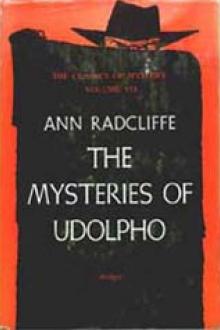
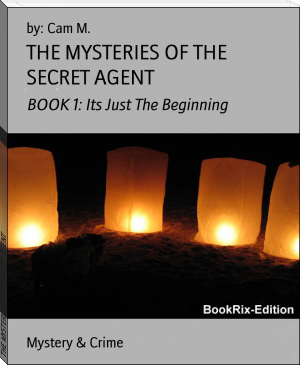
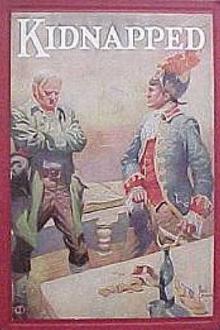
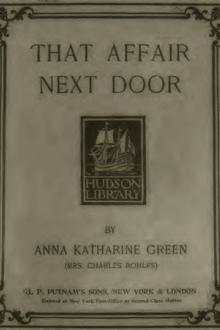
Comments (0)